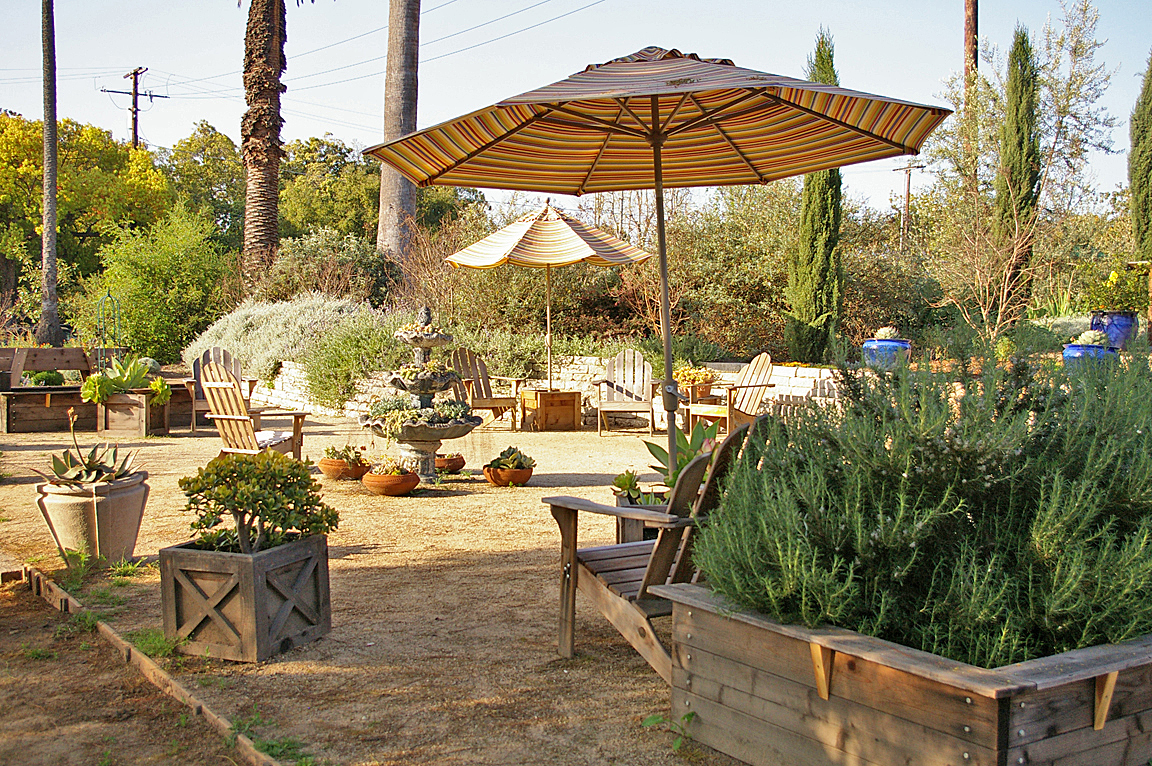
Hiking Photos
Arlington Garden
Information
|
Arlington Garden 282 Arlington Dr Pasadena, CA 91105 One of the city�s most impressive yet often overlooked natural wonders, the three-acre community garden replaced a lot long abandoned and weed-covered, now a destination for serenity seekers and plant lovers across the Southland. Arlington is also home to a 50-tree orange grove available for public plucking, an herb garden with plenty of seating for meditation and conversation, pine trees, succulents, even a solar-powered fountain and a decorative miniature amphitheater. But perhaps the most fertile turf at Arlington Garden is the imagination of its caretakers � a dedicated volunteer corps led by Charles and Betty McKenney, a retired couple who live near the horticultural sanctuary at Arlington Drive and Pasadena Avenue. �We like to point out that there are gardens and there are parks. This is a garden,� says Charles. �In parks, the people are the focal point, but here the plants are the focus. One woman said there�s a surprise around every corner.� The lush grounds were originally the site of the
Durand House, a three-story, 17,000-square-foot
residence designed by architect R.L. Roehrig for
millionaire John Durand. Completed in 1905, the
French ch�teau-style manse was said to be the
largest residence in Southern California until
it was razed in 1961, a year after Durand�s
death. Caltrans bought the land to use as a
staging area for construction of the 710 Freeway
extension. But that road was never built and the
land was largely neglected, falling prey to
massive weeds, cut back only a few times a year
by the highway agency. �Councilman Steve Madison held a meeting and
nobody came up with what they wanted,� recalls
Charles, a retired lawyer. �All they said were
things like �no restrooms, no parking lots, no
playgrounds.� Then one morning, Betty was
reading an L.A. Times Sunday Magazine story on
Mediterranean gardens and she said, �Why not
make a garden?� The McKenneys recruited Cal Poly Pomona landscape design students to create concept drawings for the garden�s layout. The plan involved growing plants which require relatively little water, a feature that won the support of the Pasadena Department of Water and Power. Thus armed, the couple persuaded the City Council to sign a lease for $100 per year. Funded by the city and private donations, Culver City�based landscape architect Mayita Dinos came on board to design the garden, from saplings down to the last bench, all of which was supplied, planted and created by volunteers. The original concept called for a Mediterranean-style demonstration garden, with drought-tolerant plants and trees from five corners of the world with dry, hot summers and rainfall in the late fall and early winter � the Mediterranean Sea region, of course, and Australia, southwestern South Africa, parts of central Chile and California. Dinos says she organized the garden into what she calls �two stylistic vernaculars: a Mediterranean vernacular on the top knoll part, with plants from all Mediterranean countries, and the lower two-thirds is primarily a California aesthetic. We used primarily native California plants that haven�t been used much in people�s gardens [such as firecracker, penstemon, bigberry manzanita and sticky monkey flower], yet they�re the most perfect to use in often-dry climates and are also important in giving butterflies and bees the right kind of food they need for the area.� In fact, the vibrant array of plants has sparked the return of more than 50 types of birds and countless bees and butterflies to the garden grounds, says Charles. The resulting winged wonder, in endless varieties and colors, was a welcome addition to the neighborhood for the McKenneys. �We live next door to the garden property, and for many years we were stuck looking at three pots of bamboo and past that, all weeds,� says Betty, a retired Caltech computer trainer. �We started with 13 trees � including seven palms, two oaks, a jacaranda and a pepper tree � and we�ve put in over 350 trees since then. And all of it we did by learning as we went.� The McKenneys fund the nonprofit garden with the $20,000 to $25,000 a year they raise from mail campaigns and an additional $27,500 from the city budget and DWP. The couple hope to raise even more so they can add fountains, a patio and another arbor. Their efforts have won plaudits from the city and the community, netting them a Community Service Award from the West Pasadena Residents� Association and a Contemporary History Maker Award from the Pasadena Museum of History. �It�s a perfect showcase for how beautiful low-water-using, drought-tolerant plants can be,� says Pasadena Parks Supervisor Ana Quintanilla. �The amount of water used compared to other types of plants in the same acreage is staggeringly low. It�s a perfect balance of Mediterranean plants and California natives as well.� For the McKenneys, the best reward is knowing they�ve created a little patch of heaven on parched earth. �This garden started as a demonstration garden of how you can grow an attractive garden in Southern California without using too much water, and that�s been successful,� says Charles. �Every day, people come out here with notebooks and cameras. People have found this is a place where they can come and sit to have a coffee in the morning on their own, or have a business meeting or come with families. One Pasadena middle-school girl who came here said she liked it �because I can hear my thoughts here.� That tells us what a lot of people think. We have an urbanized community here in Pasadena, but people can come here for peace.�
|
|
 |
 |
|
Arlington Garden 282 Arlington Dr. Pasadena, California (626) 441-4478 |
|